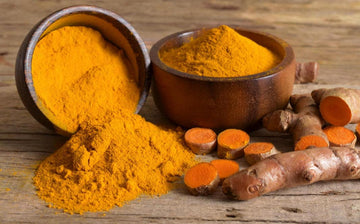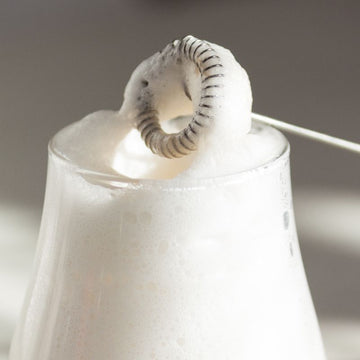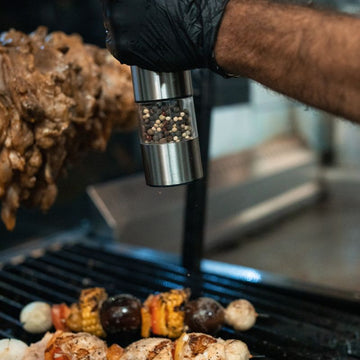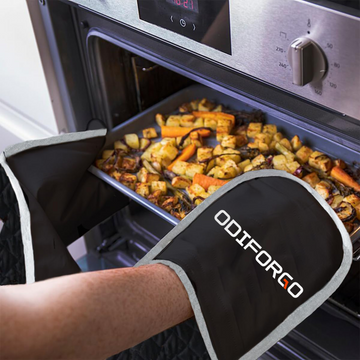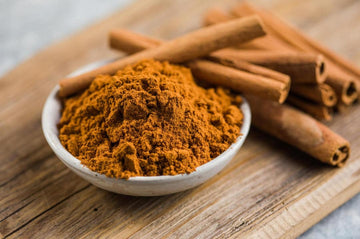Cinnamon is one of those flavors that instantly feels familiar — warm, slightly sweet, and unmistakably bold. Found in everything from baked goods to curries, cinnamon has become a staple in kitchens across the world.
Yet, behind its comforting aroma is a spice with a surprisingly complex history, multiple varieties, and uses that go well beyond sprinkling it over your morning oatmeal. Whether in stick form or finely ground, cinnamon continues to hold its place as both a culinary favorite and a functional spice with health-related benefits worth noting.
Is cinnamon considered a spice?
Yes, cinnamon is considered a spice, but only once it has been processed into a usable form. The cinnamon tree itself provides the raw material: the inner bark. When the bark is peeled, dried, and curled into quills (or ground into powder), it takes on the qualities that define it as a spice: concentrated aroma, distinctive flavor, and the ability to season food. In its unprocessed state, the bark isn’t very practical for cooking, but grinding it or simmering whole sticks in liquid releases its essential oils and makes the flavor accessible.
This distinction is important because not everything from a plant automatically counts as a spice. It’s the transformation, drying, grinding, or otherwise preparing, that turns cinnamon into the spice we recognize and use daily in kitchens worldwide.
What are cinnamon spices commonly used for?

Cinnamon spice comes from the dried inner bark of trees belonging to the Cinnamomum family. Once harvested, the bark is either rolled into sticks (often called quills) or ground into a fine powder. In this processed form, it becomes the spice we know as cinnamon. Warm, sweet, and slightly woody in flavor.
Cinnamon spice is incredibly versatile, which is why it appears in both sweet and savory cooking traditions. In baking, it’s one of the defining flavors in pastries, cookies, pies, and breads. In savory cooking, it shows up in stews, braises, and spice blends such as garam masala or Middle Eastern baharat. It’s also commonly stirred into warm drinks like coffee, tea, or mulled wine, where it infuses a subtle heat and aromatic depth. Even beyond the kitchen, cinnamon is valued in pickling, preserving, and as a fragrant garnish.
Because of its ability to balance sweetness and add complexity to savory dishes, cinnamon spice has earned a permanent spot in home pantries and professional kitchens alike.
Health benefits of cinnamon spice
Beyond its flavor, cinnamon spice has long been valued for its potential health benefits. Compounds found in cinnamon, particularly cinnamaldehyde, have been studied for their antioxidant and anti-inflammatory properties, which may help the body combat oxidative stress and support overall wellness. Some research also suggests that cinnamon could play a role in maintaining healthy blood sugar levels by improving insulin sensitivity, which is why it often appears in discussions around diet and metabolic health. Additionally, its natural antimicrobial qualities have historically made it useful in food preservation and traditional medicine. While cinnamon should not be seen as a cure-all, incorporating it moderately into your cooking can be a simple, flavorful way to support your diet with added nutritional value.
Varieties of cinnamon spice
Cinnamon is not a single, uniform spice, but rather a category that encompasses several species of tree bark, each with distinct flavor profiles, chemical compositions, and culinary roles. Understanding these varieties is important because the choice of cinnamon can significantly alter the taste and aroma of your cooking.
Ceylon cinnamon
Ceylon cinnamon, often labeled as “true cinnamon,” is native to Sri Lanka and southern India. It has a lighter color and delicate texture compared to other types. Its flavor is subtly sweet, floral, and almost citrus-like, making it the preferred choice for desserts, lighter pastries, and recipes where you want cinnamon to complement rather than dominate. Ceylon also contains lower levels of coumarin, a natural compound that in high amounts may be harmful, making it a healthier option for frequent use. However, its gentleness can make it feel muted if you’re used to the stronger supermarket cinnamon.
Cassia cinnamon
Cassia is the most widely available form of cinnamon in grocery stores. It originates from China and Southeast Asia and is darker, harder, and thicker than Ceylon bark. Cassia’s flavor is bold, sharp, and slightly peppery, with a stronger presence of cinnamaldehyde, the essential oil that drives cinnamon’s pungency. Because of its intensity and affordability, Cassia is the go-to variety in everyday baking, packaged foods, and spice blends like pumpkin spice. While effective in small doses, its higher coumarin levels mean it is not ideal for heavy or daily use.
Saigon cinnamon
Saigon cinnamon is a sub-type of cassia but with a reputation all its own. Harvested primarily in Vietnam, this variety is known for its powerful aroma and intensely spicy-sweet flavor. It has one of the highest cinnamaldehyde concentrations, giving it a fiery warmth that can transform a recipe with just a pinch. Saigon cinnamon shines in recipes that benefit from an assertive spice, such as cinnamon rolls, mulled cider, and spiced lattes. However, due to its potency, it can easily overwhelm subtler flavors if not balanced carefully.
Korintje cinnamon
Korintje cinnamon is another cassia type, commonly used in the United States in commercial baking and packaged goods. Its flavor is less aggressive than Saigon but stronger than Ceylon, striking a middle ground between subtlety and punch. Bakers often prefer Korintje for its consistency and reliability, especially in cakes, cookies, and pies. Its relatively smooth taste and moderate cost make it the backbone of the cinnamon trade in many countries.
Other regional variants
While the four above dominate the global market, other lesser-known cinnamons exist, such as Malabar cinnamon from India and Burmese cinnamon from Myanmar. These are harder to source outside their regions but highlight the diversity of this spice, each with slight variations in flavor, oil content, and appearance.
Choosing the right cinnamon
The “best” cinnamon depends on your culinary purpose. For delicate, nuanced dishes or daily health use, Ceylon is often recommended. For bold desserts, Saigon creates an unforgettable punch. For all-around baking or cooking, Korintje offers balance, while Cassia remains the reliable and accessible household standard.
How to prepare cinnamon spice
Cinnamon is versatile, and the way you prepare it can change how its flavor is released and experienced in food. While it is most commonly available pre-ground, you can also start with whole sticks (quills) and prepare them to suit your recipe.

Using whole cinnamon sticks
Whole sticks are often used in beverages, savory dishes, or slow-cooked recipes where they can gradually infuse their flavor without overpowering. Simply add a stick to simmering liquids like mulled wine, cider, tea, or curries, and remove it before serving. For rice dishes or stews, the stick can be added directly during cooking to release a mild warmth. Whole sticks keep their flavor much longer than ground cinnamon, making them ideal for storage and occasional use.
Grinding cinnamon at home
For a fresher and more potent spice, some cooks prefer to grind their own cinnamon. This is especially true if you buy Ceylon or Saigon sticks and want to preserve their aromatic intensity. To do this, break the sticks into smaller pieces and use a spice grinder, coffee grinder, or a high-speed blender. Freshly ground cinnamon will have a more vibrant flavor compared to pre-packaged powders but should be stored in an airtight container to avoid losing its potency.
Ground cinnamon
Most people will encounter cinnamon in its ground form. It’s convenient, easy to measure, and perfect for baking or sprinkling directly onto food like oatmeal, yogurt, or toast. However, ground cinnamon loses its aroma faster than sticks, so buying smaller amounts and refreshing your supply every few months ensures the best flavor.
Toasting cinnamon for extra depth
An often-overlooked technique is lightly toasting whole cinnamon sticks before grinding or adding them to a dish. Dry toasting in a skillet for just a minute releases essential oils and intensifies the spice’s warmth. This works especially well in savory cooking, such as chili, stews, or Middle Eastern dishes, where cinnamon is a background note rather than a leading flavor.
Infusions and blends
Cinnamon can also be prepared as part of spice blends or infusions. Ground cinnamon is a key component in mixes like garam masala, pumpkin spice, and chai blends. Sticks can also be infused in simple syrups for cocktails, coffee flavorings, or desserts. These preparations allow cinnamon’s natural sweetness and warmth to enhance recipes without the need for added sugar.
In short, whether you’re grinding your own, infusing with sticks, or relying on ground spice, the method of preparation plays a big role in how cinnamon performs in your dish. Choosing the right form ensures you get the flavor intensity, aroma, and effect you’re aiming for.
Cinnamon spice alternatives
When cinnamon isn’t available or when a recipe calls for a different layer of warmth, there are several spices that can stand in as substitutes. Each brings its own aromatic profile, and while none are exact replicas, they can mimic or complement cinnamon in different contexts.
Nutmeg
Nutmeg is often the first spice mentioned when cinnamon substitutes are discussed. Its flavor leans more earthy and nutty compared to cinnamon’s woody sweetness. Freshly grated nutmeg, in particular, can provide a fragrant warmth that pairs well in baked goods, sauces, and creamy drinks. Where cinnamon offers a sharper, more pronounced sweetness, nutmeg feels rounder, softer, and slightly more savory, making it an excellent option when a recipe requires subtlety over intensity.
Cloves
Cloves carry a bold, pungent flavor that can quickly dominate a dish if used too heavily. While cinnamon brings balance between sweet and spicy, cloves lean heavily into the spice with a medicinal, almost peppery sharpness. In small amounts, they can replicate the “kick” of cinnamon, particularly in stews, mulled drinks, and roasted meats. Cloves also pair naturally with nutmeg and cinnamon itself, forming the classic backbone of many spice blends like pumpkin spice or garam masala.
Allspice
Despite its name, allspice is not a blend but a single spice with flavor notes reminiscent of cinnamon, nutmeg, and cloves combined. This makes it one of the closest all-around substitutes for cinnamon in terms of taste profile. Allspice works beautifully in both sweet and savory dishes, from cookies to curries, delivering that warm complexity without needing to combine multiple spices. Its balanced nature makes it an especially good stand-in when cinnamon is missing.
Cardamom
Cardamom diverges further from cinnamon but still offers an aromatic intensity that works in similar contexts. Its flavor is floral, citrusy, and slightly sweet with a cooling finish, contrasting with cinnamon’s heat. In baking, cardamom creates a more exotic flavor, and in savory cooking, particularly in Indian and Middle Eastern cuisines, it stands as a powerful aromatic. While cardamom doesn’t mirror cinnamon’s flavor, it adds a sophisticated depth that can transform a dish in unexpected ways.
Ginger
Ginger, especially ground ginger, provides a sharp, fiery warmth that differs from cinnamon’s more rounded sweetness. Still, in recipes like spice cakes, cookies, and marinades, it can echo the spiciness that cinnamon brings. Where cinnamon adds comfort, ginger adds brightness and heat, making it a good choice for dishes where liveliness is more desirable than mellow warmth. In fact, ginger and cinnamon are often paired together for balance, showing just how complementary they can be.
Lasting warmth of cinnamon
Cinnamon spice has remained a kitchen essential for centuries because of its balance of warmth, sweetness, and depth. From baking and savory cooking to beverages and health applications, it adapts easily across cuisines and lifestyles.
Whether you prefer the subtle elegance of Ceylon or the bold punch of Saigon, understanding how to prepare and use cinnamon lets you get the most from this timeless spice. Keep it fresh, choose the right variety for your recipe, and let cinnamon’s natural character elevate the everyday into something memorable.
